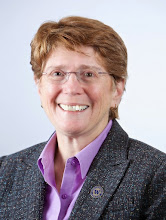Evan R. Seamone, an Army trial lawyer, proposes that judges use some exercises -- using theories from the disciplines of clinical psychology, drama, creative thinking, and critical thinking -- to become of and address possible sources of bias. Understanding the Person Beneath the Robe: Practical Methods for Neutralizing Harmful Judicial Biases, 42 Willamette L. Rev. 1 (2006), LexisNexis, Westlaw. (Sorry, the latest issue on the Willamette Law Review's website is volume 40.) The article began as a presentation to the Ohio Judicial College in 2003.
Mr. Seamone concludes:
The maxim for judges to know themselves applies to every decision where behavioral influences can negatively interfere with the judge's thinking process. While most cases afford the judge little room for the exercise of discretion, not all cases are easily decided. Judicial discretion can surface based on an alteration of one small fact in a case. Faced with discretion, judges must have tools on hand to guarantee the integrity of their decision-making. As one noted judge observes, 'A basic condition of the reasonable exercise of judicial discretion is awareness of the existence and exercise of judicial discretion.'Id. at 75-76.
Judicial mindfulness presents a set of hands-on techniques to help judges determine precisely how they are influenced by their memories, emotions, and initial perceptions. These techniques overcome the pitfalls of many existing judicial debiasing methods, such as common checklists, by relying upon the judge's intuition and abandoning the notion that all judges think in the same predictable manner. It is possible to approach subconscious impulses mainly because the techniques all draw on a judge's own subjective feelings and experiences. Judicial mindfulness encourages judges to act well outside of their comfort zones in order to discover hidden truths about themselves. While many methods exist to accomplish greater self-insight, the starting point for judicial mindfulness rests in the proven techniques of meditating, focusing, psychodrama, journaling, and cognitive therapy. This beginning framework for self-awareness can be supplemented by other methods at any time.
Of course, there's nothing in the exercises that limits them to those who serve on the bench. And behavioral influences can negative interfere with anyone's thinking process.
Filed in: judges, bias, psychology, empirical-studies, Seamone

No comments:
Post a Comment